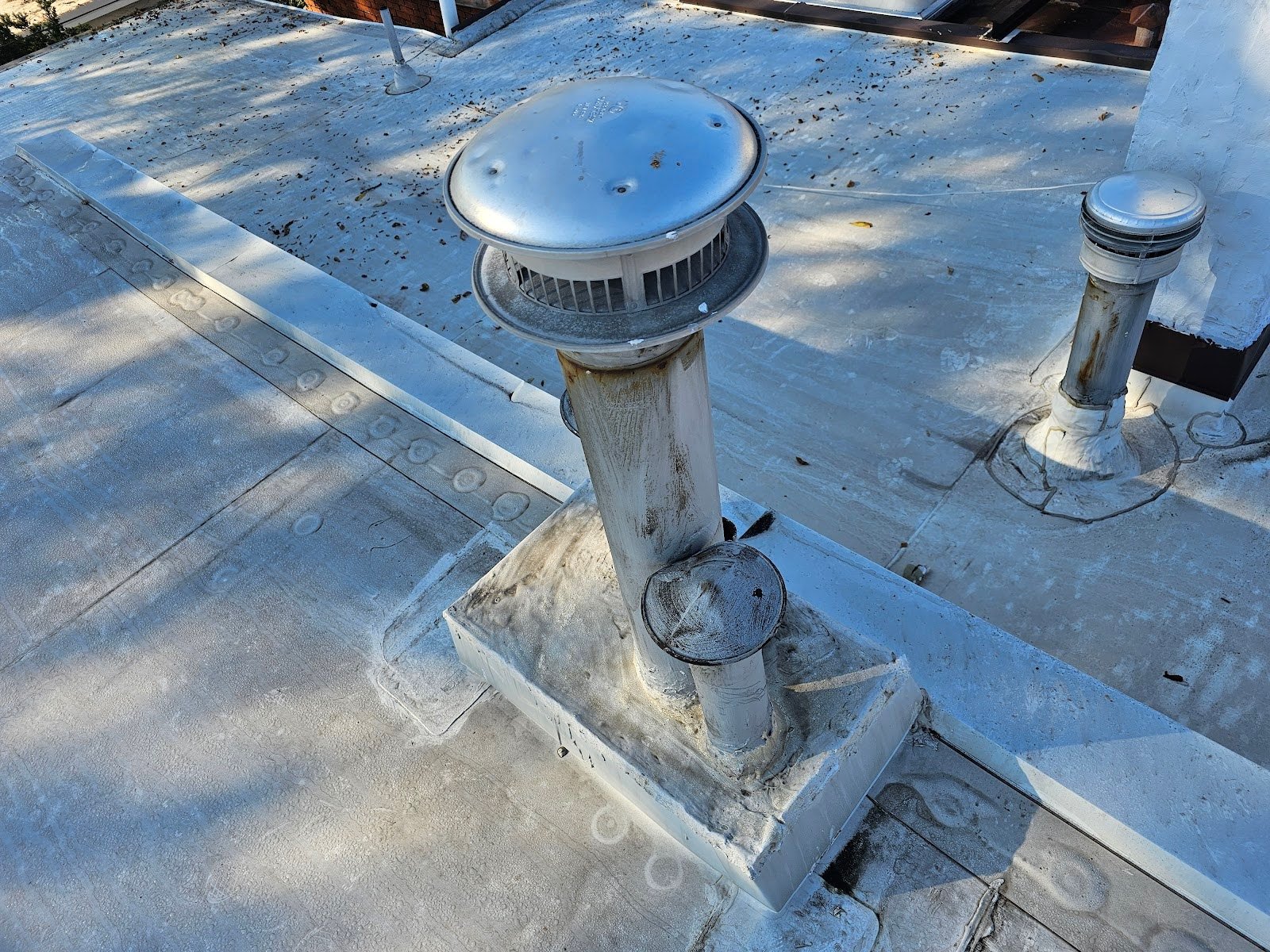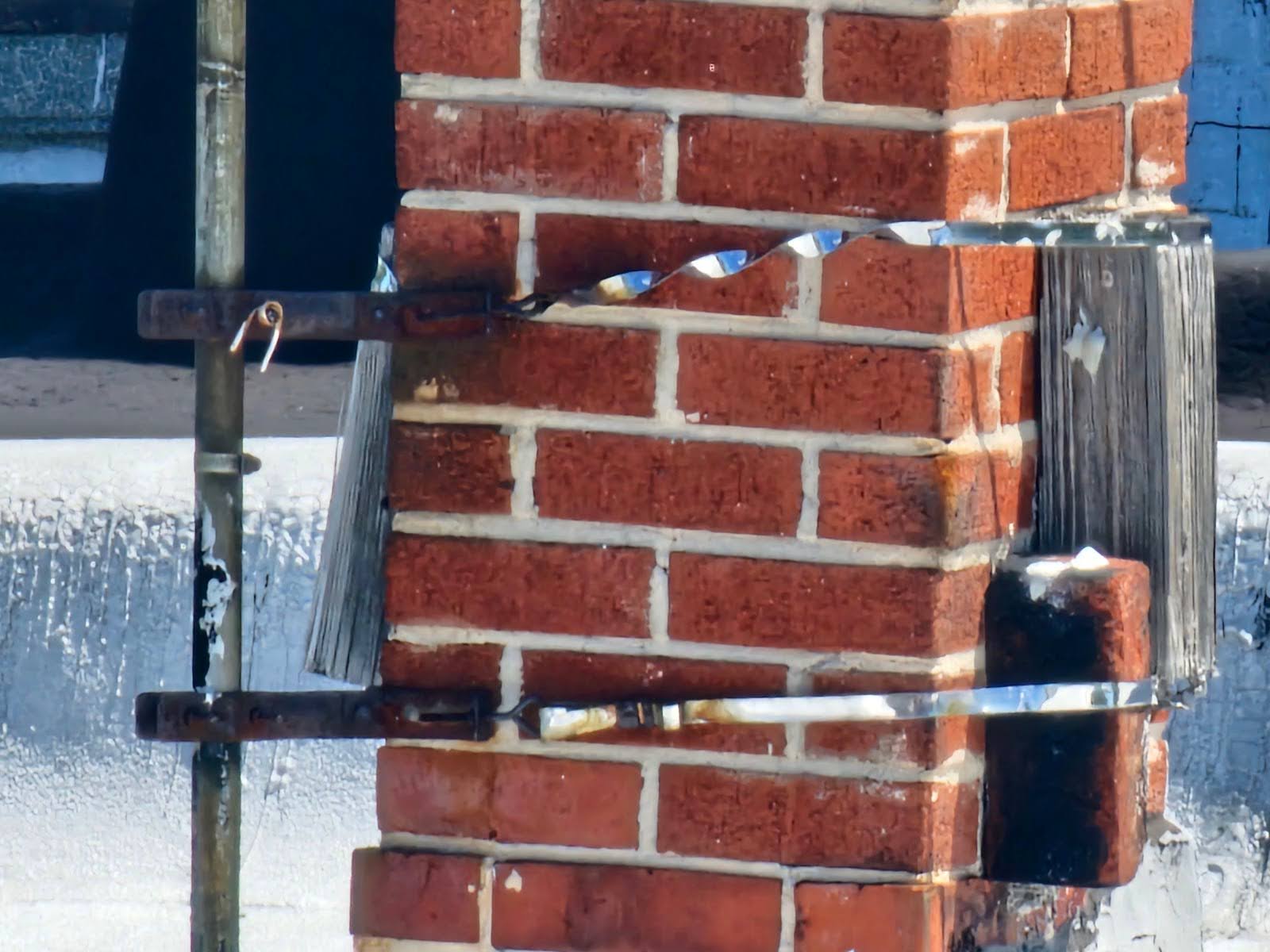Pitch Pocket Alternatives for Reliable Roof Sealing
This past week, we looked at a particular situation where two ducts passed through a sheet metal curb that was above the majority of the remainder of the low slope roof system. We’re going to look at a few more pictures of that today but we’re also going to discuss why even though that’s an alternative to a pitch pocket, it isn’t necessarily a recommendable type of installation.
Instead, this installation happens to be a good example of one of the ways people, in the past, looked for alternatives to actual pitch pockets. Pitch pockets are simply expensive. Especially when they’re large around large ducts. The best way to build is to instead separate the ducts apart, one from the other. However, the people who install the ducts are generally different from the people who do the roofing.
In things like this, we almost always recommend having a roofing specialist do the roofing and have an HVAC specialist do the HVAC work. It just makes sense because each of the two different trades are highly specialized. It’s rare for somebody to be able to do both and do both very well.
Therein though lies another problem. If two different trades are hired by the owner, they must be given an opportunity to communicate with one another before the installations. This can be very helpful because it can avoid coordination issues of conflict like this. For example, here, the HVAC contractor probably could have found a way to separate their duct penetrations. They may have just not known that they needed to be separated for better roof flashing.
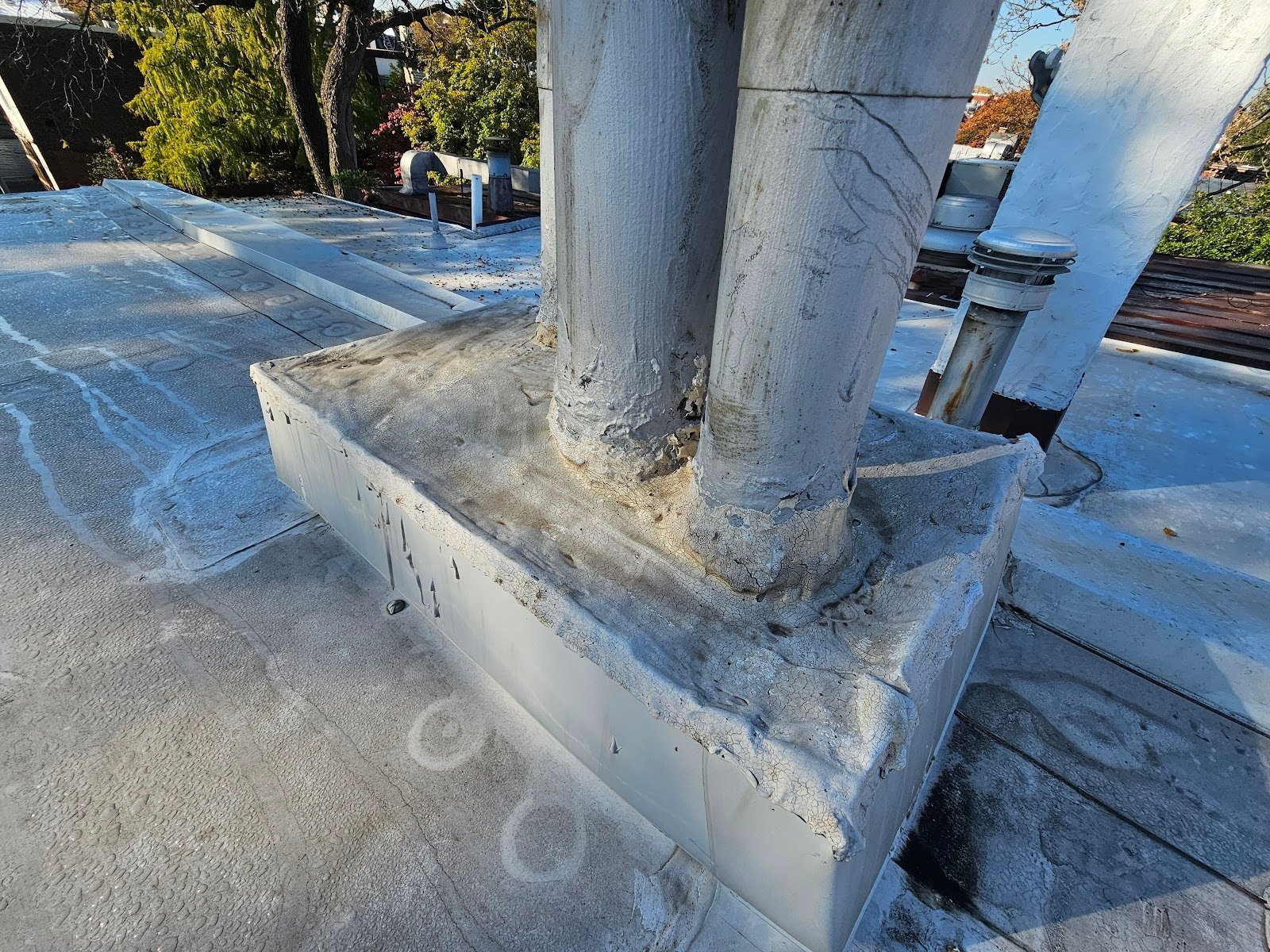
If you look closely at the picture below, you might pick up on one particular detail that should stand out. The paint on the upper portion of the duct is not the initial factory finish. Instead it’s an aluminum paint that’s made for roofing. That aluminum paint was applied to the sides of the ductwork. That particular type of paint isn’t the best application for this purpose. Other types of paint have elastomeric properties which can maintain flexibility better over time. That flexibility helps because as the ductwork has micro movements it has a lower tendency for cracking and separation.
The important detail here though is that even though the roof itself has been painted and the upper portion of the ductwork has been painted, the base of the duct is not painted. Instead, an overlay of modified bitumen flashing has been applied on top of this transition point. This detail is important because it shows that there has been rework in this area. Apparently, in the past, there were concerns of leakage at or around this duct penetration.
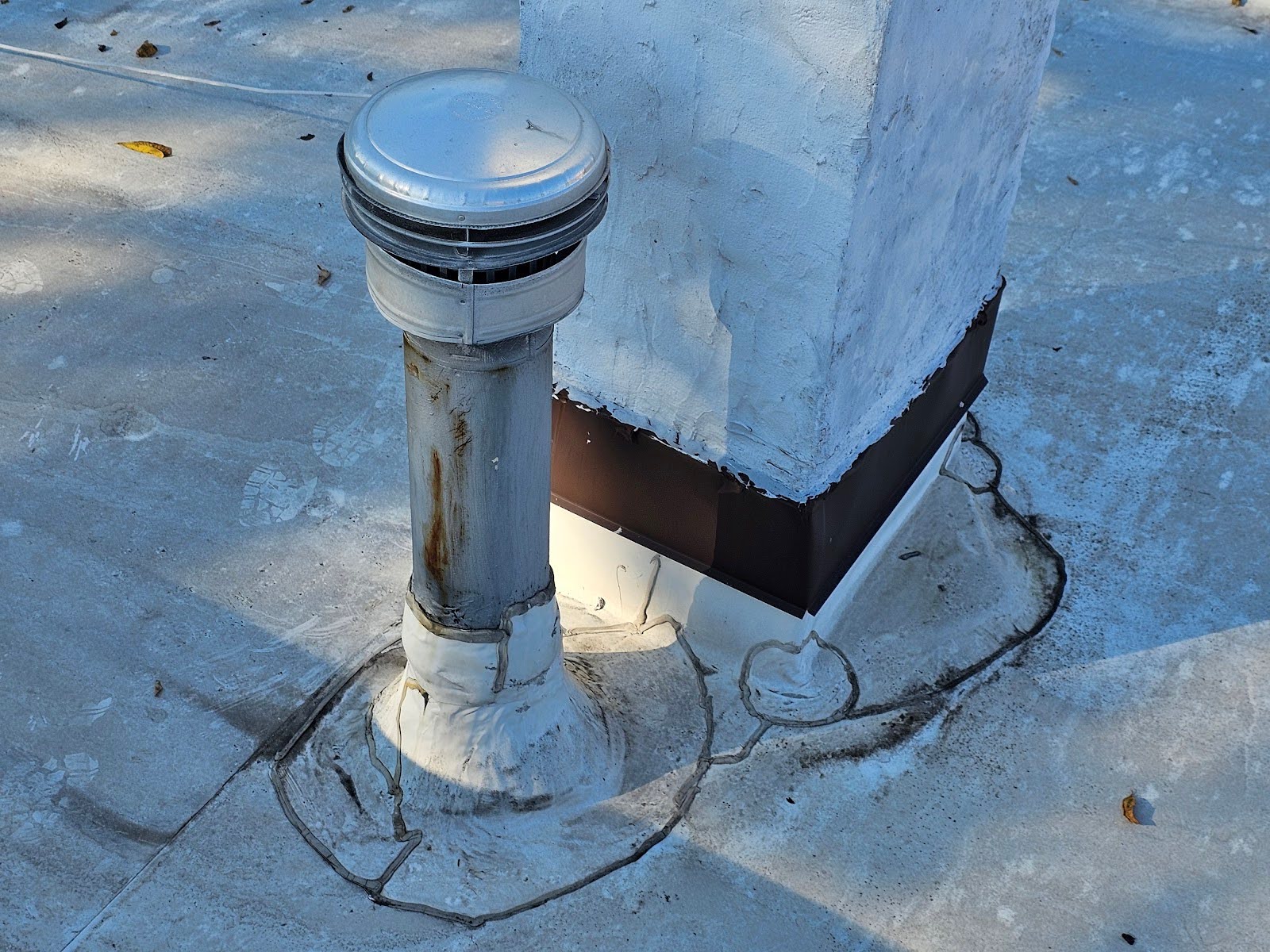
A closer view of the adjacent penetration follows below. Unlike the large square duct used as a supply air, shown in the adjacent picture, this particular duct is a smaller 6-inch diameter duct used for exhaust air. If you look at the top of the flashing at the base of this exhaust air duct, it looks like there is an emulsion at the outer upper edge of the roof membrane. That’s actually a gun applied sealant. That sealant has been applied as a redundant method of sealing that termination edge.
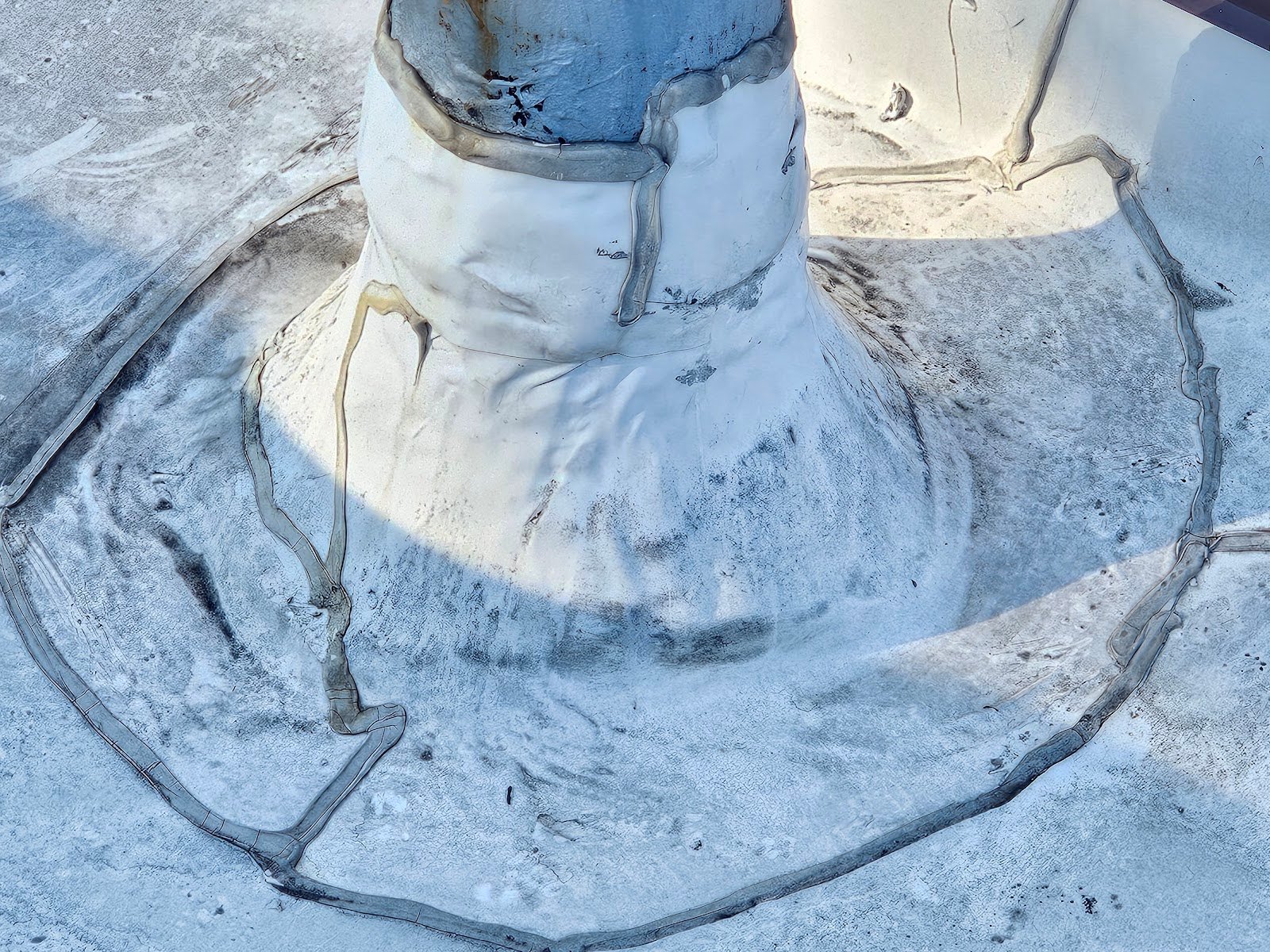
A very similar type of pipe penetration is shown in the next picture below. However there’s a big difference between the one show above and the one shown below. The picture above shows a pipe penetration through a modified bitumen roof membrane. The picture below, by comparison, shows a similar pipe penetration through a sheet metal roof. That type of roof happens to be a standing seam roof. Roofs like this were very common here on many of the buildings in Washington DC in the decades that followed the original construction.
These particular types of upturns or transitions in the roof are more difficult to create and seal in sheet metal then they are in roll roofing.. In many modern cases, the roll roofing that we are referring to and are most accustomed to is a type of single ply membrane.
There are several different types of single ply membranes, made from different material classifications. Generally though, where penetrations run through a near-horizontal low slope roof membrane, flashing can be created with a pair of concentric overlaid flashings. Generally there was a base flashing and a counter flashing on top of the base flashing. With the metal roofs, the penetrations are built differently. For example, in the case of the penetration below, the metal of the exhaust pipe is soldered to the low slope metal roof membrane.
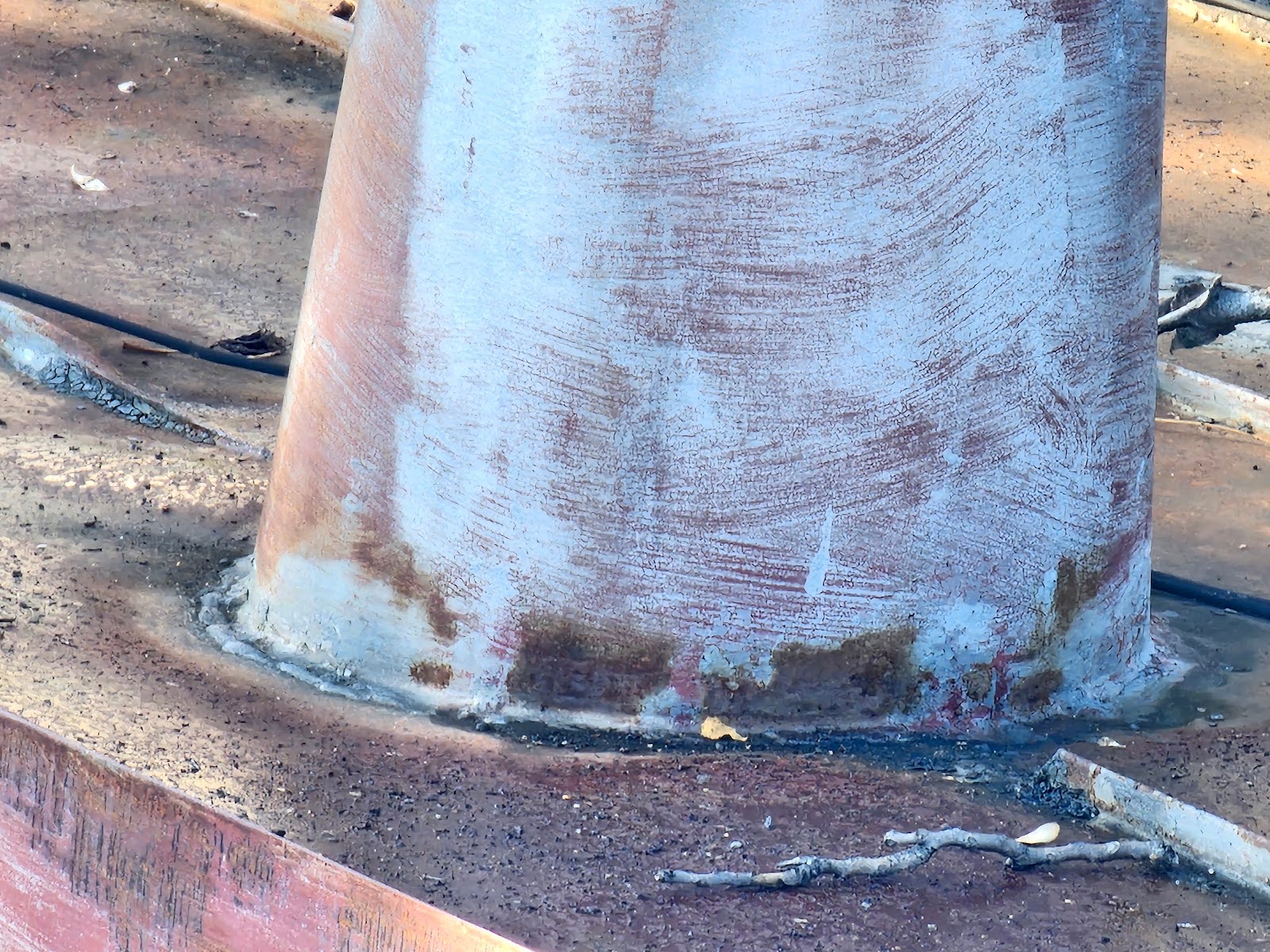
We provide this information here on our blog, and our website, to help our customers and future clients, and we recommend every building owner in DC who values the longevity of their roof (and their investments) and building use a contractor who values the simple and important principles of proper roof construction like Dupont Roofing DC. Our company specializes in flat roofing here in Washington DC and we’re happy to help building owners of almost all types.
Learn more about our company and the proper techniques of working with roofing on historic buildings in Washington DC here on our blog at DupontRoofingDC.com, and you can call us at (202) 840-8698 and email us at dupontroofingdc@gmail.com. We are happy to help and at least talk through options.

